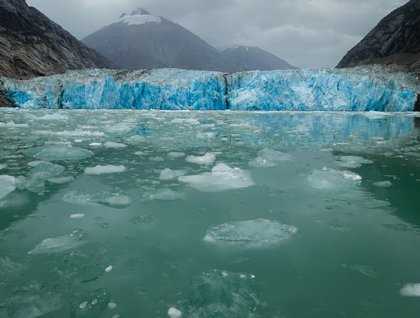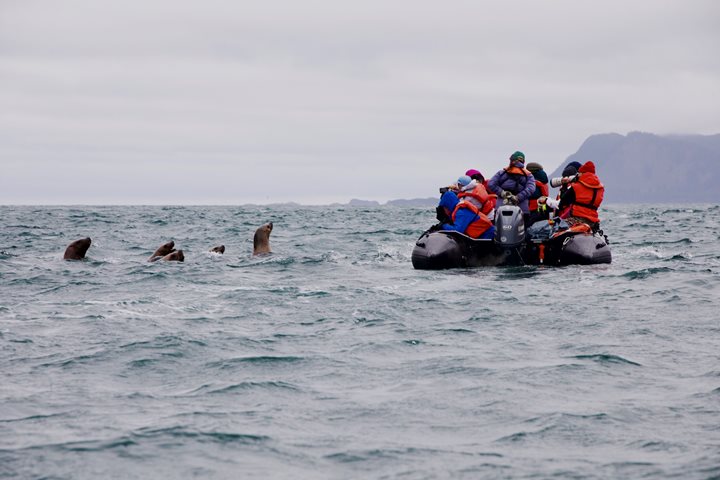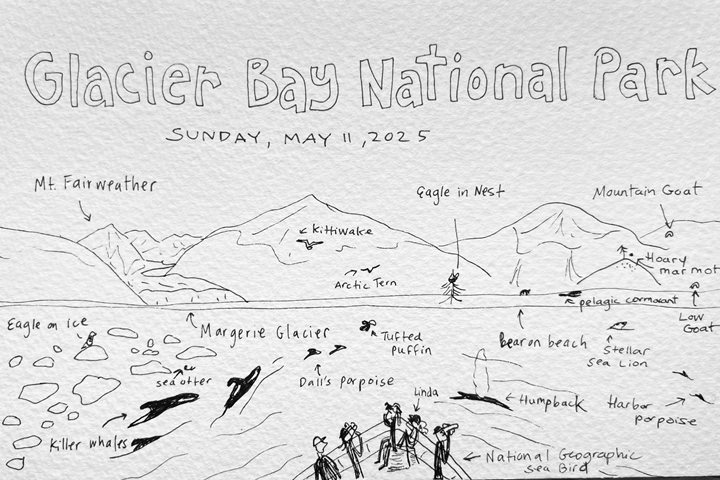I awakened this morning to a familiar sound… the symphony of rain drumming above, splattering on the starboard deck, and sloshing in the scuppers. I lay there and listened to the symphony. Moments later came the drone of the crane above, beginning to lower our small boats to the water line. In the wee hours the National Geographic Sea Lion had turned up Endicott Arm and made its way to Fords Terror Wilderness. Today we were to explore this majestic fjord system inside Tongass National Forest by small boat cruises. Still half asleep, I climbed into my layers, grabbed binoculars and made my way aft to the fantail. Don’t think about the cold damp rain; just gear up and go. The small boats zoomed away from the ship and I felt the first drops of rain pelt my face. Ahhh, fresh and clean, thank god for water! And as I looked around that’s what I saw – water, water, everywhere! Mist clinging to the granite cliff walls, drops becoming streams, flinging themselves over the edge as water falls into the deep basin below and the beautiful rain-spattered patterns of that basin as we floated and glided and zipped along. Our journey into Fords Terror was uneventful but for the beauty and the rain, however had we waited 5-6 hours we would not have been able to pass through due to the tremendous currents that form standing waves in this narrow neck. We were here at slack low-tide, and saw evidence of the intertidal zone along the bottom of the cliff walls… limpets and mussels and seaweed clung to the sides, awaiting the seawater’s return. After we motored through the narrows to make our way back to the ship I turned back and was mesmerized by a column of mist dancing above. It seemed the water and air currents reflected one another as the mist rolled and swirled and dissipated into the air.
The National Geographic Sea Lion continued up Endicott Arm, and in the afternoon we again descended to the fantail to board the small boats, this time for a closer look at the tidewater Dawes Glacier. We wound our way through ice of various shapes and sizes, some inhabited by the dark shapes of harbor seals, and spent time observing the brilliant blue river of ice. Dawes Glacier is retreating quickly, and we saw quite a bit of calving, including one tremendous shooter, where a large chunk of ice released from under the glacier and shot up into the water. The gray day seemed to highlight the green of the water and blue of the dense ice. I’m always amazed at my visceral reaction to the vibrant living ice.







